Symptoms associated with skin, nails and hair
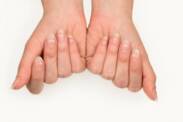
White spots on the nails
A change in the shape, colour or texture of the nail can indicate damage, vitamin deficiencies or certain diseases. White spots on the nails are professionally called leukonychia. What do they signal and why do they occur?
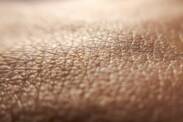
Ulcer
An ulcer is a defect of the mucous membrane or skin (depending on its location). It can lead to various complications.
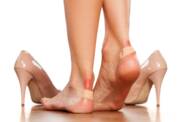
Blisters
Almost everyone experiences a blister in life. The most common type of blisters are blisters caused by friction and mechanical damage. Blisters can also arise as a result of various diseases. What health problems are manifested by a blister? How to treat it correctly?
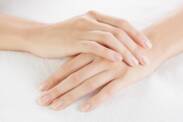
Slow nail growth
In most cases, slow nail growth does not necessarily indicate any serious disease. The rate of growth is individual and depends on many internal and external factors. What are the possible causes of slow nail growth?
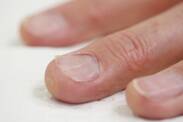
Deepened nails
Ingrown nails are also known as spoon-shaped nails. They can indicate various disorders, both local and general. It is a pathological shape of the nail plate. What are the causes of ingrown nails?
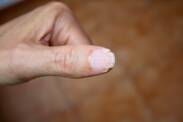
Brittle nails - onychoschizia
Brittle nails are a concomitant of certain diseases. Proper hygiene and lifestyle protect the nails from increased brittleness.
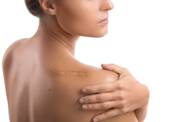
Scars
Scars form as part of the healing process after skin damage. Most people will get a scar of some kind during their lifetime. It can be the result of an accident, surgery or a poorly healing skin condition.

Hyperpigmentation
Brown spots on the skin, in the form of freckles, occur in some people from an early age. We know of cases of hyperpigmentation after sunbathing. These cases do not indicate a disease. But sometimes they can be a sign of a disease. It can be a disease of the skin, but it can also be a disease of another system.
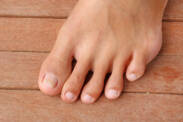
Deformed nails
Some diseases signal their presence on the skin and also on the nails. They are manifested by a change in colour, but also in the shape of the nail (deformation). In addition to diseases of other organs, the nail itself and its bed may be affected. Alternatively, there may be external damage.
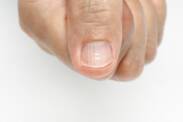
Strokes on the nails
Nail ridges can be related to a disease or lack of nutrition. They occur on both fingernails and toenails. Their appearance is most commonly observed with increasing age.

White patches on the skin
The skin protects us from the external environment. It is our protective covering. Changes on its surface are immediately visible. The loss of pigment, but also other changes in colour alert us that something is wrong. In addition to diseases related to the skin itself, it also alerts us to other diseases that may have skin manifestations.

Strie
Stretch marks - small and larger blood red, burgundy, but also blue, purple and pale transverse stripes of skin. They are often not a symptom of disease, rather an aesthetic and cosmetic problem.
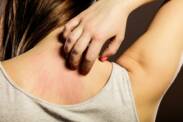
Reddened skin
Reddening of the skin is a common phenomenon of increased blood flow to the skin, which can be triggered by emotions or increased physical activity. In some cases, there is a more serious problem behind the red colour.

Rash
The skin has a protective function. It contains sweat glands, sebaceous glands, hair beds and other components with different meanings. It is the largest organ of the body and can also be affected by various diseases. One of the manifestations of these is the rash. In addition, diseases of other parts of the body are also manifested on the skin by this symptom.

Uhry
Eels, as we all know them, are not just a cosmetic problem. There are several reasons behind their appearance. They most often form on the face, especially on the nose. But other parts of the body are no exception. However, in addition to the visual aspect, one must be careful about a complication called inflammation.
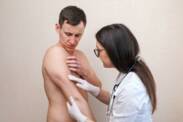
Hard ulcer
This symptom is the main sign of a sexually transmitted disease, namely syphilis. However, it is not only transmitted during sexual intercourse. It is transmitted through bodily fluids and therefore also during kissing. Another non-infectious cause of a skin ulcer is a blockage of the duct of the sweat or sebaceous gland.

Excessive Hair Loss: Causes, Treatment
Hair loss, also called alopecia, is one of the physiological and natural phenomena. However, when it is excessive, it may become a problem.
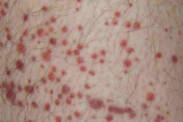
Petechie
Petechiae are tiny blood eruptions the size of a pinhead. They occur in various diseases, which may also be infectious. Mechanical pressure or skin irritation is a minor cause.

Yellowish skin
Yellowing of the skin is a symptom that indicates various diseases, such as blood, liver, gallbladder or other digestive system diseases. It also occurs in cases of dehydration or malnutrition. When this symptom occurs, it is important to have a professional examination.
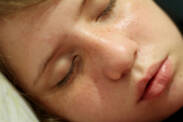
Oily skin
Many people, women, men and children have oily skin. Many cases are caused by the negative effects of several factors. The condition of the skin is affected by the surrounding environment, the level and method of hygiene, but also by lifestyle. In some cases, the cause of oily skin is overweight or obesity, but also hormonal changes.
Skin, nails and hair make up the outer part of the body. The skin covers the entire body of a person and its surface area is usually up to 2 m2 depending on the size of the person. It has several functions, such as protective, thermoregulatory, sensory or immune, with the skin acting as a barrier and separating the external and internal environment. It protects the organs and the body from external influences, whether physical, chemical or biological, and also from various threats.
The skin can be exposed to various influences not only from the outside, but also from the inside of the body, which is why several diseases manifest themselves on its surface. Some are directly skin-related, but others arise as a result of immune reactions or as a consequence of processes in the cardiovascular or metabolic systems. The skin is probably the most visible sign and symptom of a disease on the body and should therefore be paid attention to.
Nails in humans can be found on the tips of the fingers and toes, and physically it is a keratin plate that grows out of the nail bed from birth. At the root of the nail, new nail plates are constantly forming from the germ layer, so that the nail grows and is constantly renewing and regrowing. Their function is an aid to tactile perception, but also protective. The condition of the nails can many times be related to the levels of various substances in the body or to skin diseases on the body.
The hair and similarly the hair are also part of the skin, being formations growing from roots that are found in the subcutaneous layers. The deepest part is the hair follicle, which contains the hair follicle, the sweat gland and the hair germ itself. Like nails, hair is constantly growing back and gradually loses its pigmentation with age. Hair also shows several symptoms and signs related to the state of the body, substance levels and certain diseases.
On the skin, it is possible to observe symptoms of, for example, external injuries or exposure to substances or factors from the environment, but also various symptoms that originate from internal infectious and inflammatory diseases. The skin may sometimes change its colour, surface roughness, hydration, or there may be formations of a pathological nature. It is not always necessary to look for a problem in the skin behind every symptom, sometimes it is related to the internal environment.
Similarly, nails and hair indicate the condition of the body by their quality, shape and strength. If, for example, the hair is brittle or falls out excessively, this may be a disorder of the hair or skin directly, but also a systemic sign of a deficiency in the body. The nails also show levels of various important vitamins or substances in the body. Therefore, the skin, nails and hair are very good indicators not only of primary diseases, but also of the whole state of the body.
Problems with nails
Slow nail growth does not have to be a sign of a disease, it could be a deficiency of calcium in the body, or a low level of vitamins A or C or a lack of collagen in the body, for example. Sometimes, however, it is related to low hormone levels in hypothyroidism, lower limb ischaemia or tuberculosis, for example. If the nails are excessively brittle, it may also be a deficiency of magnesium, silicon, zinc, vitamins A or B, or a skin disease.
Sometimes skin diseases also attack the nails and disrupt their nutrition or cause infections, such as yeast infections. However, anorexia, anaemia, coeliac disease, hypothyroidism or ischaemia of the lower limbs can also be the cause of brittle nails. If the nails are dented and have a spoon-like shape, there may be blood, endocrine or thyroid disorders. Sometimes mycotic skin diseases can also lead to this type of nail damage.
It often happens that the nails are affected by a diverse deformation. In this case, it is most often an external pressure deformation, for example, from an accident. However, if it is not an external factor, the deformation is caused, for example, by psoriasis, onycholysis or some nervous disease of the local type. The lines under the nails are in turn a typical symptom of a nutrient deficiency in the body, but sometimes also a symptom of fungal diseases, psoriasis, hyperthyroidism, exceptionally infectious endocarditis.
Hair and pubic hair
Hair on the skin usually grows, especially during puberty, adolescence and young adulthood, and hormones play a major role in this growth. Thus, slow growth occurs mainly in disorders that are caused by the slowing down of the body, i.e. especially in hormonal problems. However, if there is a loss of body hair, it may also be due to cancer, metabolic disorders or liver problems. Diabetes or coronary artery disease of the lower limbs are also manifested in this way.
On the contrary, increased hair growth is related to hyperthyroidism, i.e. an acceleration of the body's metabolism and an increase in hormone levels, but it is also a symptom of cysts on the ovaries in women or Cushing's syndrome. The hair can also be affected by various problems. Most people are probably troubled by dandruff in the hair, which is particles of dead skin. They occur with long-standing oily hair and also with a lack of selenium, zinc or vitamins in the body.
Especially women are troubled by brittle hair. Hair brittleness can be caused by mistreatment or exposure to adverse environmental influences, but often this symptom is part of a lack of hair nourishment, in skin diseases or in anaemia or coeliac disease. Hair loss is caused by hormone deficiency and is related to metabolic and hormonal diseases or alopecia, which can be both local and general.
If a person has oily hair, very often it is just a reflection of the internal state of the organism and may not be a more serious disease. Most often there are excess fats in the body or, on the contrary, a deficiency of vitamins A and B. Occasionally, a problem with hormone levels may be the cause. If clusters of light hair appear on the head, it is a loss of pigmentation, which can be caused either by albinism, various tumours in the body or vitiligo.
Different leather colours
The overall pallor of the skin is usually related to febrile and infectious diseases, but it can also be a symptom of anaemia and insufficient blood supply to the skin area, for example. This is true, for example, in infective endocarditis, coarctation of the aorta, leukaemia, myocardial infarction or atherosclerosis. There may also be local pigmentation disorders, but in most cases, pallor is manifested by diseases affecting multiple systems in the body. A serious case is also intoxication, when a person may also be pale.
Small white patches on the skin are a sign of depigmentation, which is typical of vitiligo or albinism, or fungal diseases. Yellowing of the skin and yellowish skin are typical of jaundice, but also of liver failure, cirrhosis or coeliac disease. The opposite is hyperpigmentation of the skin, which is typically seen in haemochromatosis, Addison's disease, melanoma, basalioma or Cushing's syndrome, or in hormonal disorders.
Blue skin is most often caused by a lack of oxygen and occurs locally, typically in areas where there is not enough blood supply. If there is an overall blueness, it is a sign of a lack of air in the body, for example in newborns it is hypoxia. Redness of the skin is also one of the signs of other discoloration. If the skin redness is localised around the joint, it is usually related to arthritis or other inflammatory or degenerative diseases of the joint.
In general, reddened skin is either associated with a skin disease, such as urticaria, psoriasis, skin abscess, atopic eczema or allergy, or it is a disease originating from within the body, which is also manifested in the skin by a change in its colour. For example, Lyme disease, gout, Kaposi's syndrome and sometimes scarlet fever are manifested in this way. Also, redness may be associated with inflammation of the veins or some serious febrile diseases of an infectious type.
Formations on the skin
Young people are very often troubled by acne. It is basically an inflammation of the sebaceous glands, which occurs due to hormonal imbalance in the body. Sometimes it can even occur with Cushing's syndrome or with ovarian cysts in women. Similarly, as a result of hormonal imbalance and especially in adolescents at puberty, pimples also occur on the face and body and this is most often due to overproduction of sebum. Sometimes they can also be caused by bacteria and yeast on the surface of the skin.
It is also very easy to see on the skin if a person is suffering from a sexually transmitted disease. For example, rubbery bumps on the skin are typical of syphilis, but sometimes similar bumps can also be seen in tuberculosis of the skin, or in basalioma or melanoma. Very often syphilis also manifests itself as hard sores on the skin, usually within 3 weeks after infection. Sometimes such ulcers also arise from bacterial inflammation or from disorders of the sweat glands.
Sometimes a mole can also be a problem, especially if it triggers the development of melanoma, which is a skin cancer. This cancerous tumour invades the melanocytes, which are the cells that provide pigmentation and give rise to birthmarks. Various allergic reactions are also manifested on the skin, such as the appearance of urticarial pimples, which are directly linked to urticaria. In addition, this symptom also occurs in anaphylactic shock.
Directly with skin diseases occurs, for example, eczema, which affects either the top layer of the skin or the subcutaneous layers. It is a frequent symptom of diseases such as atopic eczema, impetigo, atopic dermatitis and sometimes occurs in allergies or hay fever. Another symptom is the so-called xanthoma, which is a small deposit of fat in the subcutaneous layer that is manifested by a bump on the skin and often occurs on the limbs. Sometimes it also arises from atherosclerosis.
Often, various defects or diseases of the skin are also manifested by blisters. Typically, for example, blackheads, urticaria, atopic eczema, warts, impetigo, but sometimes blisters are also caused by external factors, such as burns or frostbite. Rashes can be found on the surface of the skin in some infectious diseases, such as shingles, measles, etc., but they can also be associated with celiac disease, Crohn's disease or infectious mononucleosis.
A special symptom on the skin are ulcers. These can also occur on the inner mucous membranes in the form of smaller ulcers. Typically, for example, in the case of the gastric system as gastric ulcers. On the skin, ulcers are manifested, for example, in the case of Bérc's ulcers, in connection with diabetic neuropathy or on the basis of insufficient blood circulation in the lower limbs. Minor skin ulcers also occur in the case of blockage of the sebaceous glands or on the basis of infection.
Skin surface change
The skin can sometimes be altered in some way even to the touch. Typically, for example, in the case of so-called parchment skin, which is a symptom for skin with impaired nutrition. This is typical in the elderly, but also in people with diseases of veins, arteries and blood vessels or varicose veins. Cellulitis is characterised by orange skin. This is also caused by fluctuating hormone levels in the blood, and such skin also appears during puberty, pregnancy and the menopause. Sometimes the bumps are too coarse.
Cornified skin is typical of warts or eye curls, where local cornification occurs and it is actually a defensive reaction of the skin against mechanical pressure or other environmental influences on a specific point on the skin. Skin thinning, in turn, may not always be related only to skin defects, but, for example, this symptom also occurs in diabetic neuropathy, which is a neurological disease, or it may be one of the symptoms of Lyme disease.
Oily skin has an increase related to excessive levels of fats in the body and is also accompanied by clogging of the pores. Conversely, dry skin is a symptom of various problems. Whether it is just temporary dehydration, or immune system diseases, or inadequate blood supply due to vascular problems. This symptom occurs in leprosy, atopic eczema, diabetic neuropathy, phenylketonuria, bulimia, celiac disease and also in coronary diseases.
Disruption of skin structure
The skin may have only the upper layers disrupted, or the lower subcutaneous layers may be disrupted as well. Usually this occurs with injuries and abrasions, but sometimes also on the basis of diseases. In scabies, for example, parasites breed directly in the skin and make small tunnels there. Scratches can also appear on the skin as a result of allergic reactions, for example, in the case of urticaria. Many times, however, these scratches are self-inflicted as a result of excessive itching from skin diseases such as smallpox.
Similarly, scars can arise from a variety of causes. Smaller scars called stretch marks are caused by rapid weight loss or weight gain, when the skin does not adequately adapt to surfaces. But they can also form after blisters, rashes and, of course, after injuries or surgery. Also unpleasant is the wetting of the skin, which is usually associated with various blisters and disruption of the skin layers, for example, in atopic eczema or in Bérc's ulcers.
Other symptoms manifested on the skin
Scales may also appear on the skin. If they are localized locally, it may be a minor skin irritation, while a larger occurrence is most often psoriasis. At the same time, however, atopic eczema or hypothyroidism are also manifested in this way. If it is a scaling of the nipple, most often it is a symptom of the appearance of a tumour on the breast. This is also manifested by the skin of the nipple being pulled in, but this symptom is also one of the symptoms of mastitis, i.e. inflammation of the mammary gland, and also occurs with cysts.
In some cases, tiny lines or dots of red colour may appear on the skin. These formations are called petechiae, and are small effusions of blood from the thinnest and smallest blood vessels. They are caused by pressure on the skin but also in some diseases such as leukaemia or haemophilia. Slow healing of wounds on the skin also indicates haemophilia, which is a bleeding disorder, or sometimes diabetes. One of the very unpleasant symptoms on the skin is also itching.
If it is an itch on the head, it may be related to dandruff or dermatophytosis, which is a skin disease. General itching anywhere on the body can also be caused by these skin diseases, but also, for example, by an allergic reaction. Itching often occurs with reddening of the skin, for example with urticaria or atopic eczema. Sometimes, however, it can also be associated with diseases of the internal organs, for example, in liver disease or Hodgkin's lymphoma.









